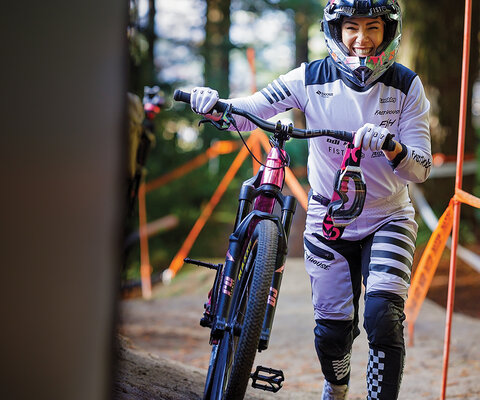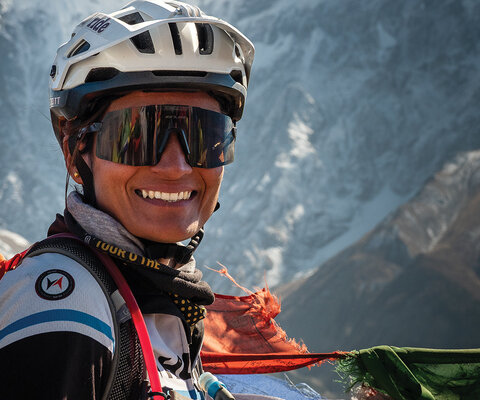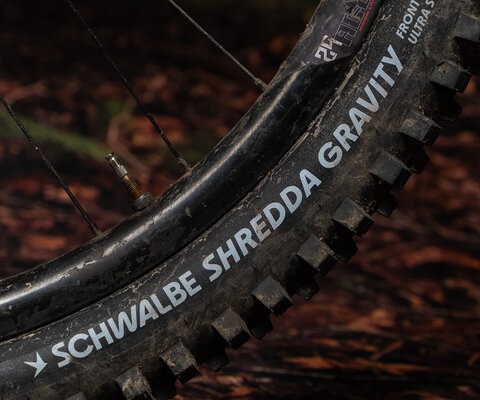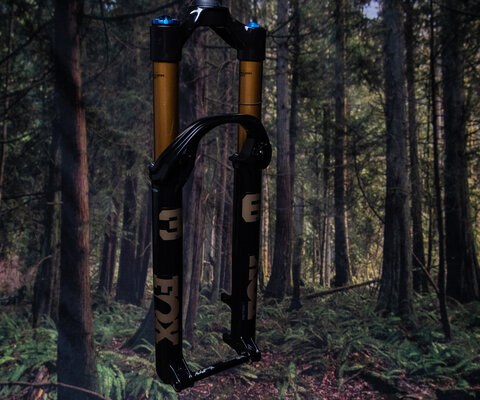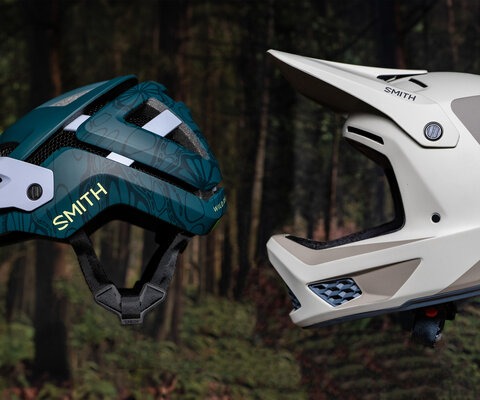
Where Time Stands Still Tuning out on the Maah Daah Hey Trail
Words by Pete Thomas | Photos by Marc O'Brien
Our tires skid to a halt under the piercing North Dakota sun.
As the dust settles, we focus on the steady movements of two dung beetles, carefully rolling their utilitarian balls of goodness down the same ribbon of dirt we’ve come to ride for the next four days. The encounter is the first of many novelties to grace us in the storied Badlands on the Maah Daah Hey Trail, which this year celebrates its 20th anniversary. I’d heard about this trail for quite some time, but am finally experiencing it with four fellow Montanans, tuning out from our busy lives to enjoy this playground in the dirt without a soul in sight.
We are far from the first to escape to this desolate region. Theodore Roosevelt dropped out of society to move to this spot in the 1880s. Lured initially to hunt buffalo, but later to heal a grieving soul, his cabin life along the banks of the Little Missouri River was straight out of a western. Today, his namesake national park is the area’s primary attraction, with the county seat of Medora (population 130) being the hub. The land outside of the park is managed as national grasslands, with open-range cattle capitalizing on the bounty left from spring rains. We’ll soon see firsthand the delicate nature of the relationship between precipitation and the land upon which it falls—both for beasts and mountain bikers who travel far and wide to ride the classic singletrack.
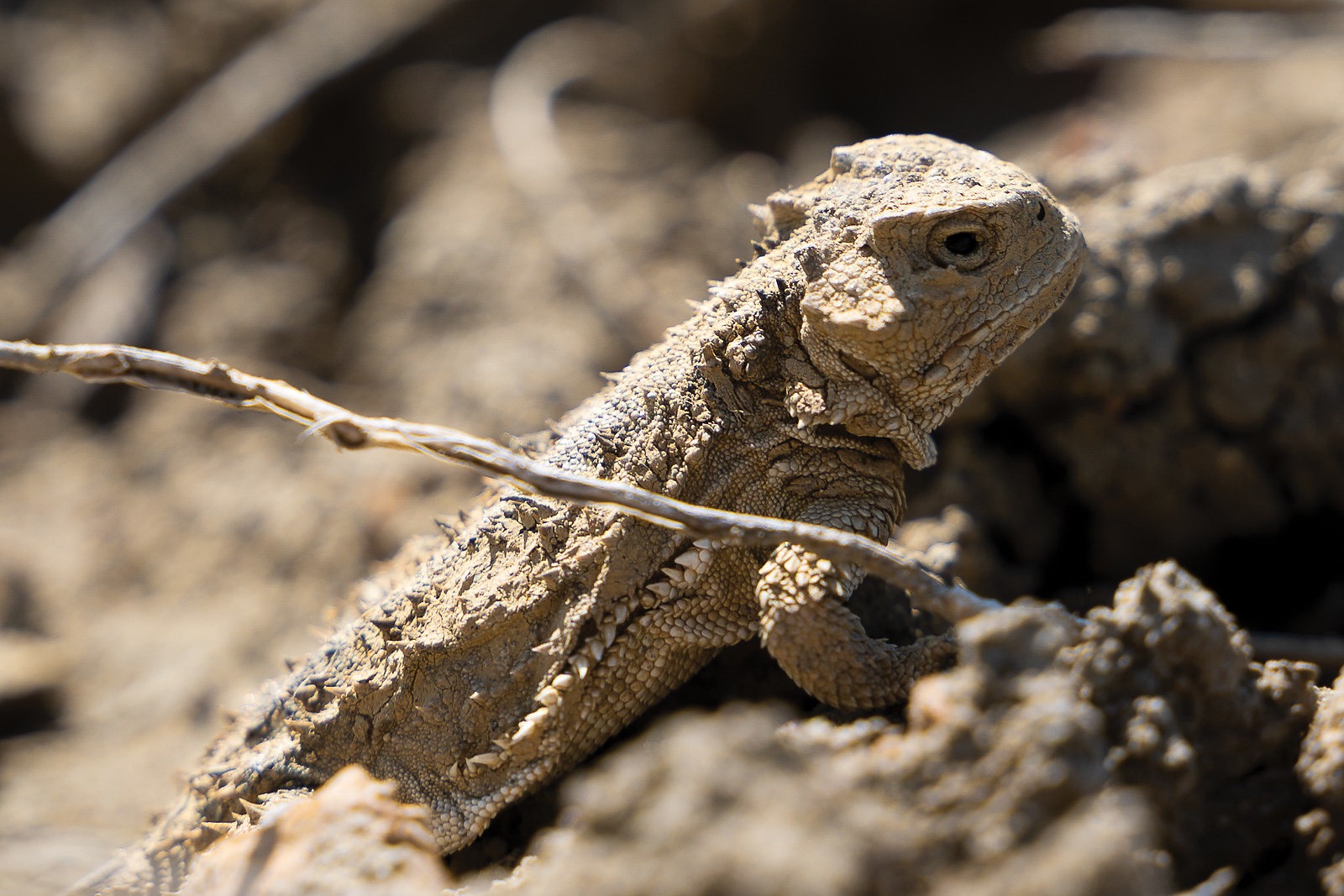
From an aerial view, the region resembles a giant mud puddle that has dried up, leaving a patterned maze of cracks and cupped craters of various shapes and sizes. Our plan is to ride four sections of the Maah Daah Hey Trail, covering more than 100 miles from north to south, exploring each crater along the way. We want to see what each spine or shoulder reveals as we climb into a new landscape, over and over again.
We pass hoodoos of morphed earth and climb technicolor ramps covered in lizard-like scales, dropping down their chutes. We see horny toads and can’t believe how small they are in real life. We dodge bull snakes around blind curves.
As first-timers, our eyes are open to all the newness. From our start at the Elkhorn trailhead, our days turn into a repetitive upover-down-across motion, traversing the arid draws and hilltops, each zone a microcosm in itself. The Maah Daah Hey brings an explorative state of mind to our natural appetite to play with gravity, so we balance our discoveries with opportunities to rally. We pass hoodoos of morphed earth and climb technicolor ramps covered in lizard-like scales, dropping down their chutes. We see horny toads and can’t believe how small they are in real life. We dodge bull snakes around blind curves. We let go of the brakes and charge through miles of grassy slopes, flicking ticks off our legs when we finally stop. And we ride through petrified forests, where gigantic pines towered eons ago, carefully descending the crumbly, exposed switchbacks leading to camp.
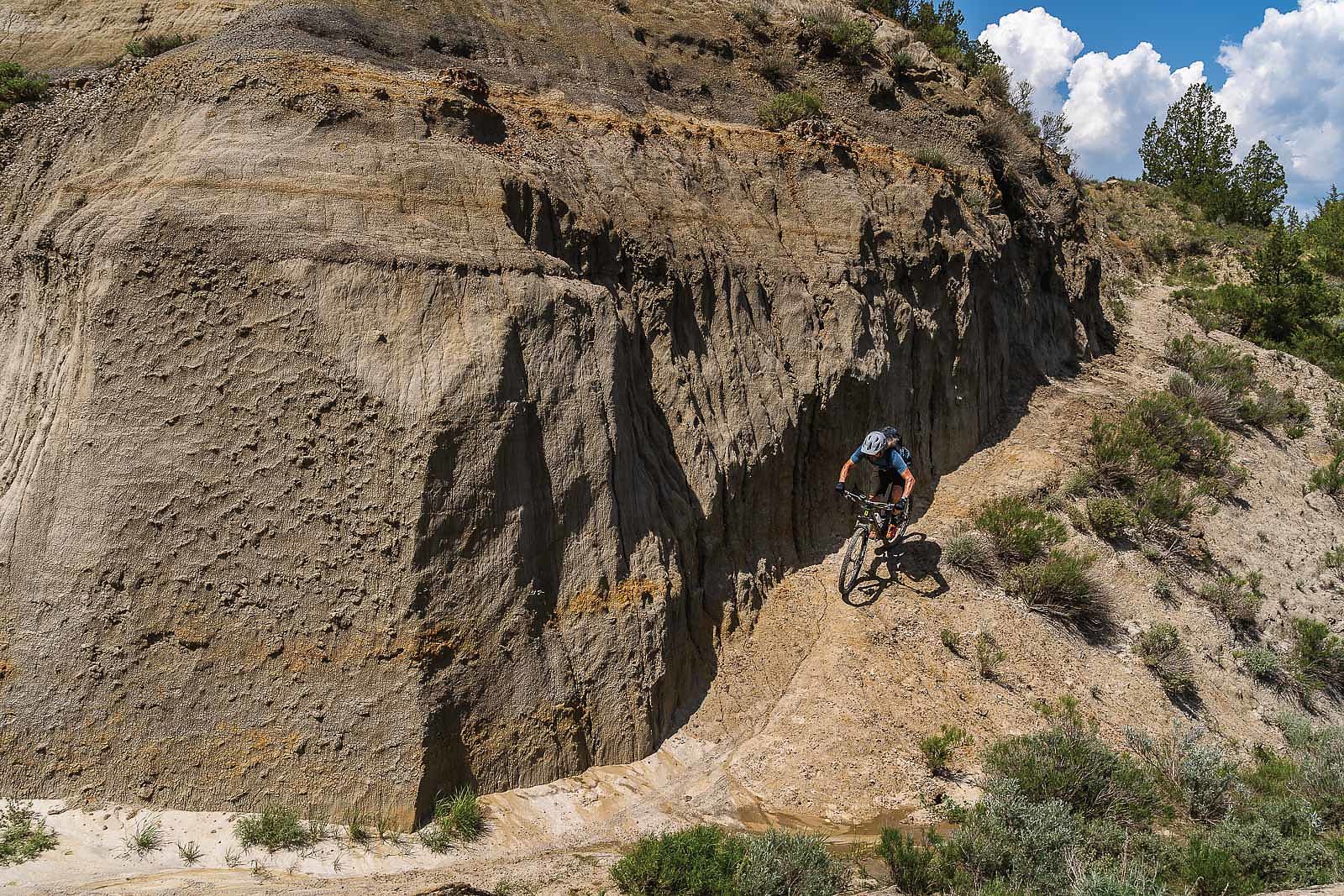
We also battle long days of exposure, where shade is nowhere to be found, and experience what happens when dirt turns to mud. Ripping through a berm, I power-slide through a fresh cow patty, spraying myself with the greenish-brown roost. Thanks to this small bit of bovine doodoo, my chainring sounds awful. We then hit a few unavoidable mud puddles that gunk up our bikes for an entire afternoon. Despite the challenges, we are fortunate. A bit of water and stick cleaning and we pedal onward. While the evening’s lightning storm puts on an amazing display, we manage to steer clear of any real precipitation.
It’s hard not to zoom out and take in the big picture. I feel the history, one that transcends humanity’s blip of time here. And we’ve seen fewer than 10 people on the entire trail, which still maintains its handcrafted flavor. While the newer southern portions ride better and leverage the learnings of the original sections to the north, the whole trail seems to avoid being over machined or overused. But time has indeed shaped this landscape. As I watch the sun rise over our last camp at Burning Coal Vein, I can’t help but imagine a scene when dinosaurs reigned supreme. That giant mud puddle has long since evaporated, but I’ll bet things today look much as they did in ancient times.
